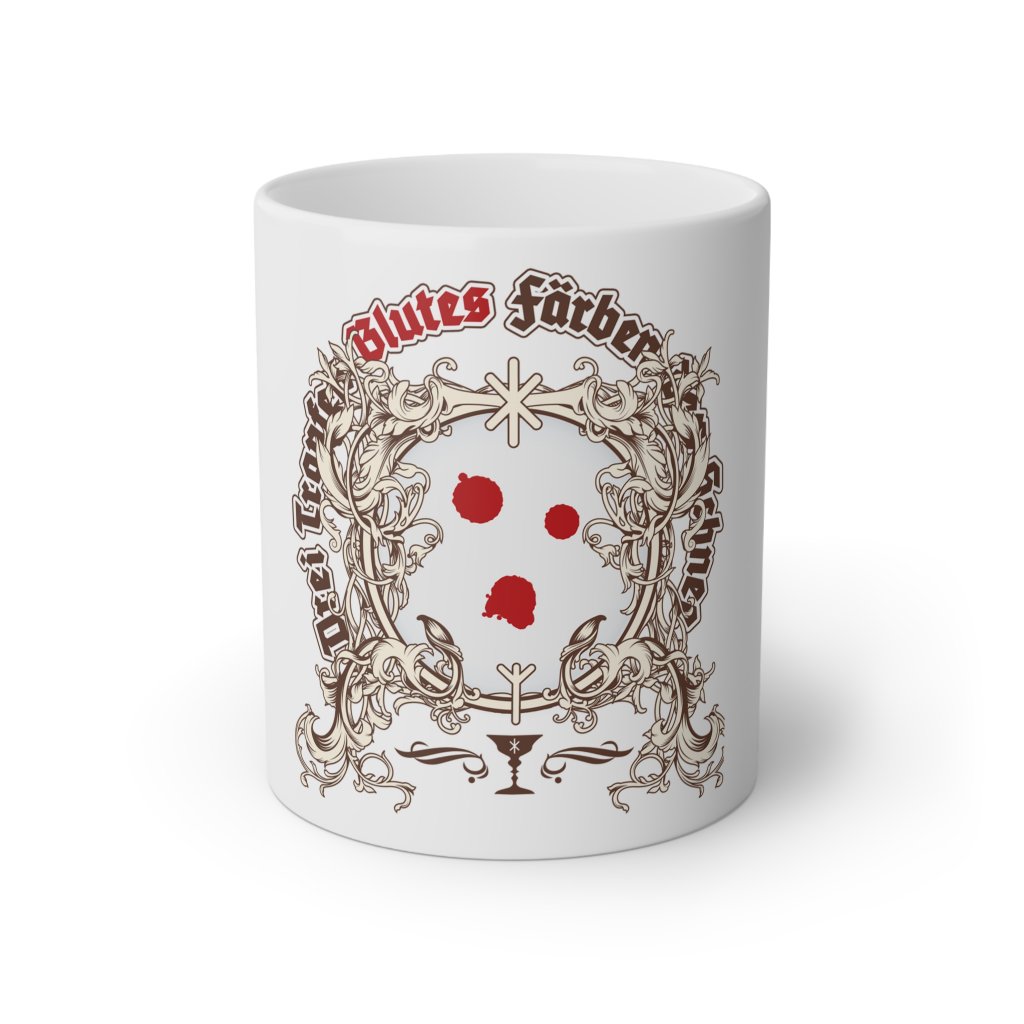In the depth of winter, as snowflakes drifted down like feathers from the heavens, a queen sat by her ebony-framed window, sewing. A sudden prick of her needle drew blood—three drops, crimson against the white snow. The sight inspired her wish for a child “white as snow, red as blood, and black as ebony.” Thus begins the Brothers Grimm’s tale of Snow White.
These three drops of blood, seemingly a fleeting detail, set the stage for destiny, echoing deeper motifs found in medieval literature, particularly Wolfram von Eschenbach’s Parzival and Chrétien de Troyes’ Perceval. In these tales, the interplay of blood and snow becomes a vision, a portal to profound self-discovery and spiritual revelation.
The Drops in Parzival
Wolfram’s Parzival introduces the bloodstained snow in its sixth book. King Arthur’s best falcon attacks a wild goose, leaving three drops of blood in the snow. Parzival, captivated by the sight, sees the image of his beloved Condwiramurs in the drops, a vision so vivid it renders him motionless and lost in contemplation. This trance-like state, akin to a dream, symbolizes Parzival’s inner journey—a search for meaning and connection.
In Chrétien’s version, the drops likewise evoke thoughts of a loved one. However, here the falcon and goose play a subtler role, and the bloodstains on the snow serve primarily to draw Perceval into a moment of introspection. Wolfram, in contrast, weaves these elements more intricately into his narrative, infusing them with symbolic resonance that hints at divine providence and the mysterious ties between love, destiny, and spirituality.
The Symbolism of Three
The number three resonates deeply in mythology and esoteric traditions. In Parzival, the three drops form a triangle—representing Parzival’s wife, the Grail, and his divine purpose. This triad mirrors the Trinitarian archetype often associated with spiritual enlightenment and cosmic balance. It’s no coincidence that snow, a symbol of purity, becomes the canvas for this revelation, and blood, a marker of life and sacrifice, provides the contrast.
Connections to the Maier Files
In Episode 8 of the Maier Files series, the phrase “Drei Tropfen Blutes färben den Schnee” emerges as a cryptic clue. This reference is more than homage to medieval epics; it is a deliberate nod to the transformative power of seemingly trivial details. Like Parzival’s vision, it challenges readers to look beyond the surface and uncover hidden truths.
Additionally, Lena, often called the “goose girl” within the series, is central to this motif. The blood drops in Episode 8 appear during a pivotal moment when Ulva strikes Lena in anger, accusing her of failing to remember her own heritage. This act symbolizes Lena’s internal struggle and her lost connection to her past. Much like Parzival’s trance before the bloodstains, Lena’s journey revolves around rediscovering her identity and purpose.
Furthermore, the Maier Files “Three Drops of Blood” mug draws inspiration from these legends. Its design, featuring symbolic elements of blood, snow, and geometry, serves as a modern artifact inviting contemplation. What lies hidden within its intricate design? What truths might one unveil by gazing deeply into its pattern? These questions align with the series’ overarching themes of mystery and discovery.
The Inner Journey
The bloodstains on snow do not merely captivate the eye; they draw the beholder inward. Parzival’s vision leads to a confrontation with his inner self and his place in the cosmos. His journey—from impulsive youth to Grail Knight—mirrors the spiritual awakening that the imagery of blood and snow evokes. Likewise, the Maier Files encourages its audience to embark on their own quests for understanding, blending historical enigmas with metaphysical inquiries.
Beyond the Surface
The interweaving of Parzival, Snow White, and the Maier Files highlights the timelessness of archetypal motifs. Blood on snow speaks to the dualities of life: purity and passion, vision and blindness, destiny and free will. These narratives remind us that the most profound truths often lie just beneath the surface, waiting for a perceptive gaze to bring them into focus.
A Call to Discover
The “Three Drops of Blood” mug is more than merchandise; it is a key to unraveling mysteries. Its design offers a visual puzzle, much like the intricate patterns of Parzival‘s narrative. What do you see? What connections can you draw? The mug’s symbolism invites reflection, making it a perfect companion for your own journey into the unknown.
As the Brothers Grimm remind us, “Man muss seine Wurzeln neu wachsen lassen, wenn man im Sturm standhalten will.” This timeless wisdom warns of forces seeking to uproot and distort the original power of myths, stripping them of their authenticity. In today’s world, such narratives—particularly those perpetuated by Hollywood—can overshadow the deep truths found in ancestral stories.




